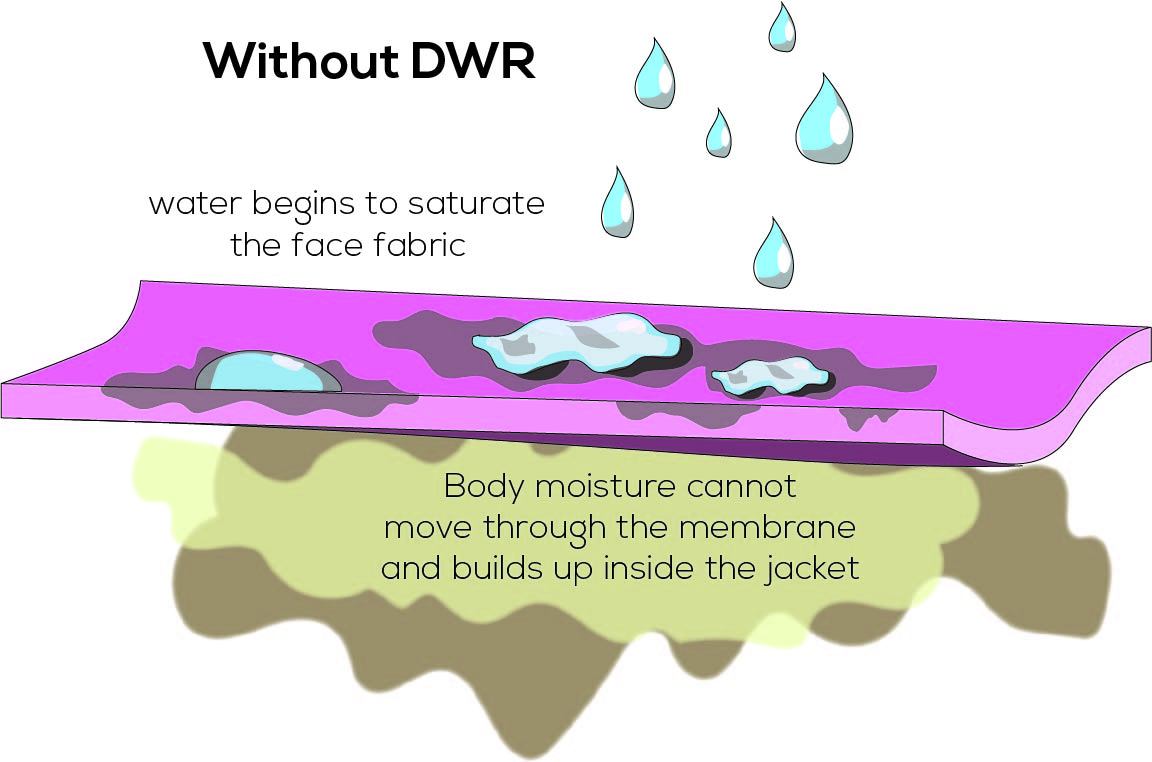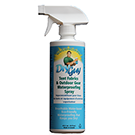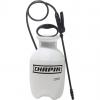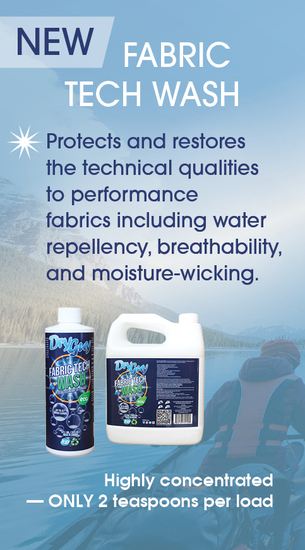Want to stay D-R-Y when it rains? You need outerwear with a high-performing DWR.
Virtually all rainwear have their exteriors treated with a durable water repellent (DWR) finish. It is rainwear's first line of defense against precipitation.
True, a waterproof/breathable membrane (e.g., Gore-Tex®, eVent®, REI Elements®) will stop water from penetrating a rain jacket's interior. But a DWR prevents precipitation from saturating the jacket's exterior. Without a DWR, a rain jacket's exterior becomes waterlogged and heavy; the damp fabric tends to sag and cling to your skin.
Key point: DWRs diminish in performance due to a number of factors—dirt, body oils, abrasion and repeated launderings.
- Often they can be revived by a washing and a few minutes of tumbling in a clothes dryer set on low or medium heat.
- With heavily used garments, DWRs eventually need to be reapplied by a spray-on or wash-in product.
When Do DWRs Need Maintenance?
Test your rainwear by sprinkling or spraying some drops on its exterior. Does it bead up and roll off? Your DWR is in good shape. If you give the fabric a single strong shake, does most of the moisture fly off? Ditto.
If, however, the water sits on the fabric and that section begins to darken slightly, water is making its way to the fibers and wetting the fabric. It's time to revive your DWR.
Good news: DWR coating does not impair your jacket's breathability. Rather than coating a textile's entire surface, DWR coats individual fibers, leaving the space between the fibers open for breathability.
If, however, the water sits on the fabric and that section begins to darken slightly, water is making its way to the fibers and wetting the fabric. It's time to revive your DWR.
Good news: DWR coating does not impair your jacket's breathability. Rather than coating a textile's entire surface, DWR coats individual fibers, leaving the space between the fibers open for breathability.
How to Revive Existing DWR
First step: cleaning. Follow the cleaning instructions for the type of rainwear you own. Washing away dirt and oils does much to restore a DWR's water-shedding abilities.
Next step: apply heat. After washing, exposure to heat does the most to bring a DWR back to life. Generally speaking, you should place the garment in a dryer set for low or medium heat for up to 15 minutes.
- Gore-Tex: W.L. Gore recommends touching up Gore-Tex items with a steam iron (at a warm setting). First-time users are advised to place a towel between the iron and garment during the touch-up.
- eVent: The maker of eVent does not encourage the use of dryers, advocating hang drying. It commonly promotes touch-ups with a steam iron (at a warm setting). As with Gore-Tex, it's safest to place a towel between the iron and the fabric.
Selective use: Here's a tip often used by mountain guides to revive a jacket's high-abrasion areas:
1. Spray worn abraded areas with a DWR aftercare product.
2. Use the synthetic setting on an iron (one with a trusted thermostat) to apply low to medium heat. It's a process similar to starching the collar of a dress shirt. Important: The garment must be able to accept ironing. Check the garment's care instructions before trying this.
1. Spray worn abraded areas with a DWR aftercare product.
2. Use the synthetic setting on an iron (one with a trusted thermostat) to apply low to medium heat. It's a process similar to starching the collar of a dress shirt. Important: The garment must be able to accept ironing. Check the garment's care instructions before trying this.
How DWRs Work
DWRs work by increasing the "contact angle" or "surface tension" created when water contacts a textile. Basically, a high contact angle creates a microscopically "spiky" surface that suspends water droplets on the outer fringe of the fabric.
An optimized DWR keeps droplets in a rounder shape—like a dome-shaped bead. The rounder the droplet, the easier it rolls off the fabric. A low contact angle permits droplets to assume a flatter shape, one that can spread out like a splotch, cling to the fabric's surface and eventually seep into it.
DWR Ratings
Manufacturers generally measure DWR effectiveness by a spray test. Water is sprayed onto a textile, and the amount that sticks is visually assessed. A score of 90 points indicated that roughly 90% of the fabric has no water sticking to it. The higher the number, the better the performance. The test is then repeated after a number of washings to determine durability.Test scores and the number of washings are combined to create a rating. For example, a 90/10 rating means the spray test achieved a total of 90 points after 10 washes.
Not all manufacturers publish DWR performance ratings, but here is a basic guide for interpreting any that you find:
- Good: 80 points after 10 washes. This is a basic outerwear finish.
- Excellent: 80 points after 20 washes. Marmot, for example, uses this as its minimum rating for outerwear.
- Superior: 80 points after 50 to 100 washes.




















Comments